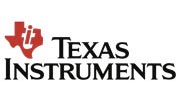

Texas Instruments




10+ Texas Instruments Analog Layout Engineer Interview Questions and Answers
Q1. Why are semiconductors used in electronics?
Semiconductors are used in electronics because of their ability to conduct electricity under certain conditions, making them essential for creating electronic devices.
Semiconductors can be used to control the flow of electricity, allowing for the creation of transistors, diodes, and integrated circuits.
They have properties that fall between conductors and insulators, making them versatile for various electronic applications.
Semiconductors are essential for amplifying and swit...read more

Q2. Find equivalent capacitance for a infinity ladder structure.
Equivalent capacitance for an infinity ladder structure can be found using the concept of series and parallel capacitance.
An infinity ladder structure consists of an infinite number of identical capacitors connected in a ladder-like pattern.
The capacitance of each individual capacitor in the ladder is assumed to be C.
To find the equivalent capacitance, we can consider the structure as a combination of series and parallel capacitors.
The series capacitance of two capacitors is ...read more

Q3. Find the current during SC and open circuit conditions
The current during SC (short circuit) and open circuit conditions depends on the specific circuit and components involved.
During short circuit conditions, the current will be very high as there is a direct connection between the power source and ground.
During open circuit conditions, there will be no current flow as the circuit is not complete.
The specific values of current during SC and open circuit conditions can only be determined by analyzing the circuit and its component...read more

Q4. What is a diode and how does it work?
A diode is a semiconductor device that allows current to flow in one direction only.
A diode has two terminals - an anode and a cathode.
It works by allowing current to flow from the anode to the cathode when a forward voltage is applied.
When a reverse voltage is applied, the diode blocks the current flow.
Diodes are commonly used in rectifiers, voltage regulators, and signal demodulation.
Examples of diodes include silicon diodes, Schottky diodes, and light-emitting diodes (LEDs...read more

Q5. Biasing of a diode and it's voltage and current characteristics.
Biasing of a diode refers to applying a DC voltage across the diode to control its voltage and current characteristics.
Biasing a diode involves applying a DC voltage across it in order to control its operation.
Forward biasing occurs when the positive terminal of the voltage source is connected to the anode of the diode.
Reverse biasing occurs when the negative terminal of the voltage source is connected to the anode of the diode.
In forward bias, the diode conducts current and ...read more

Q6. Working and different regions of operations of the mosfet.
MOSFET operates in different regions: cutoff, triode, saturation. Each region has specific characteristics.
Cutoff region: MOSFET is off, no current flows
Triode region: MOSFET acts as a resistor, linear relationship between Vgs and Id
Saturation region: MOSFET acts as a current source, Vds is small and Id is relatively constant

Q7. Find circuit v ,i and equivalent resistance
To find circuit v, i, and equivalent resistance
Analyze the circuit to determine the voltage (v) and current (i) at specific points
Use Ohm's Law (V = IR) to calculate the voltage or current if resistance is known
To find equivalent resistance, combine resistors in series or parallel using appropriate formulas
Apply Kirchhoff's laws to solve complex circuits

Q8. Fabrication process of a mosfet
The fabrication process of a MOSFET involves creating the various layers and structures that make up the transistor.
Start with a silicon wafer as the base material
Create the gate oxide layer on top of the wafer
Deposit polysilicon to form the gate electrode
Implant dopants to create the source and drain regions
Add metal layers for interconnects
Perform various lithography and etching steps to define the transistor's features

Q9. Charge sharing among capacitors.
Charge sharing among capacitors refers to the redistribution of charge between capacitors when they are connected in parallel.
Charge sharing occurs when capacitors are connected in parallel and have different initial voltages.
The capacitors will redistribute charge until their voltages are equalized.
This phenomenon can impact circuit performance and should be considered during analog layout design.
Example: In a sample circuit with two capacitors C1 and C2 connected in paralle...read more

Q10. Series combination of resistor
In a series combination of resistors, the total resistance is the sum of individual resistances.
Total resistance is calculated by adding the individual resistances in the series.
Current remains the same throughout the series combination.
Voltage is divided among the resistors based on their individual resistances.





Interview Process at Texas Instruments Analog Layout Engineer




Reviews
Interviews
Salaries
Users/Month












